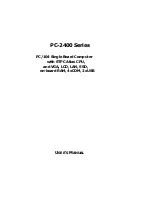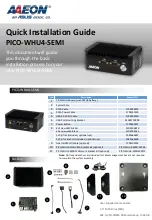
Appendix: QFN and BGA Assembly Guideline
1.
Temperature Profiling
Temperature profiling should be performed for all new board designs by attaching thermocouples at the solder
joints of QFN and BGA packages, on the top surface of the larger components as well as at multiple locations
of the boards. This is to ensure that all components are heated to temperature above the minimum reflow
temperatures and the smaller components do not exceed maximum temperature limit.
For larger or sophisticated boards with a large number of components, it is also important to minimize
the temperature difference across the board to be less than 10 degree to minimize board warp. Maximum
temperature at component body should not exceed the MSL3 qualification specification.
2.
Reflow Profile Guideline
The solder reflow profile should follow the recommendation from paste manufacturers and general standards
such as JEDEC/IPC J-STD-20.
shows the range of temperature profiles of the J-STD-20 specification. The
profile parameters and component peak temperature guidelines are listed in
.
Figure 7-9 JEDEC recommended lead-free reflow profile
The GR551x fulfills the lead-free soldering requirements from IPC/JEDEC, i.e. reflow soldering with a peak
temperature up to 260°C.
The QFN40 lead frame is made of CμAg and has Matte Sn plating. This is 100% Sn and thus Pb-free. Plating
thickness is 300 – 600 µin. The Matte Sn CμAg LF can withstand 3x reflow at 260°C.
Table 7-9 Reflow Profile Parameters
Profile Parameters
Lead-Free Assembly, Convection, IR/Convection
Ramp-up rate (Tsmax to Tp)
3°C/second (max)
Preheat temperature (Tsmin to Tsmax)
150°C – 200°C
Preheat time (ts)
60 seconds – 180 seconds
Time above TBL, 217°C (TL)
60 seconds – 150 seconds
Time within 5°C of peak temperature (tp)
20 seconds – 40 seconds
Copyright © 2021 Shenzhen Goodix Technology Co., Ltd.
71



























